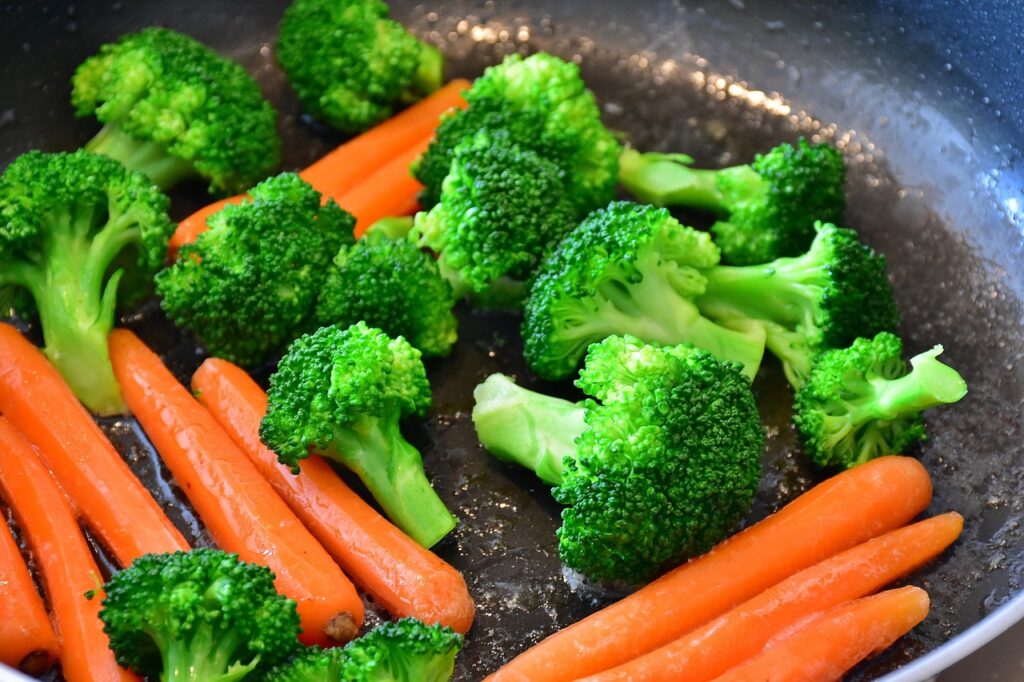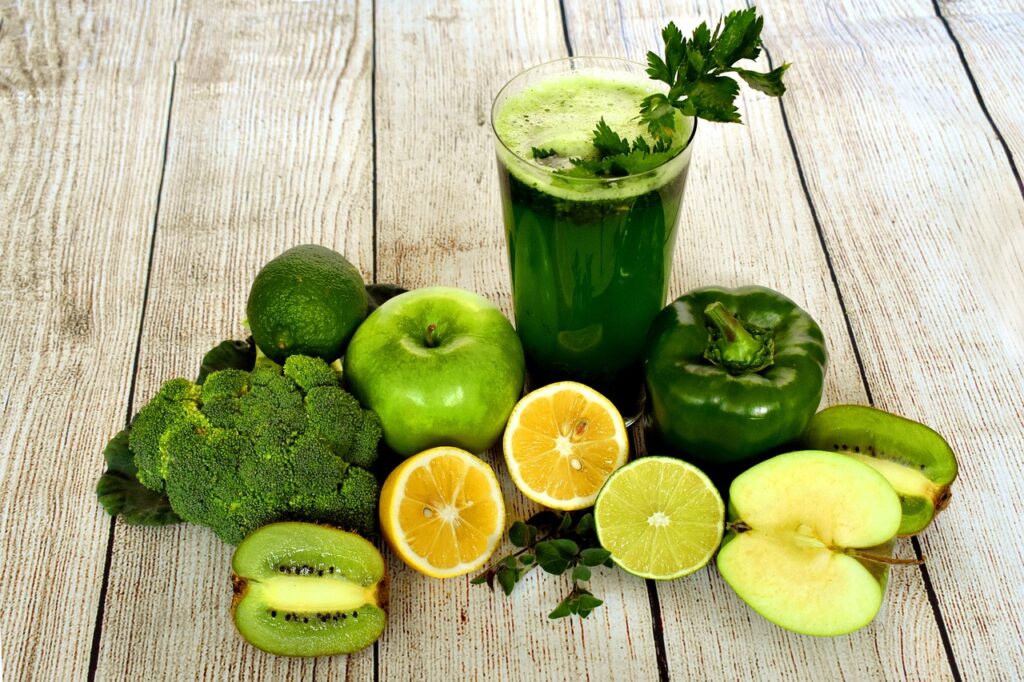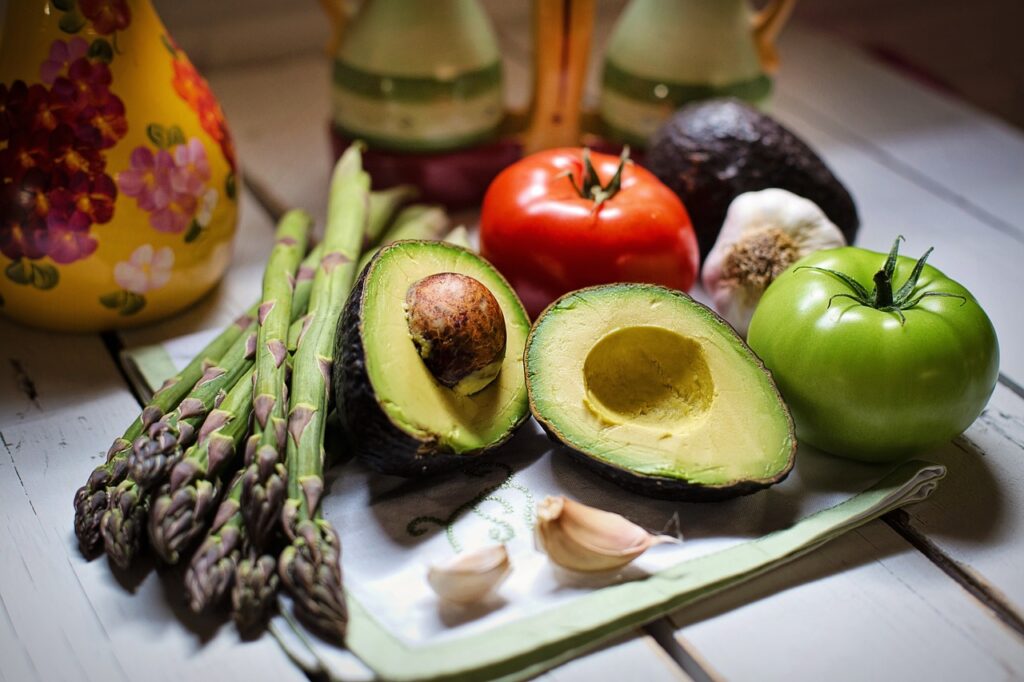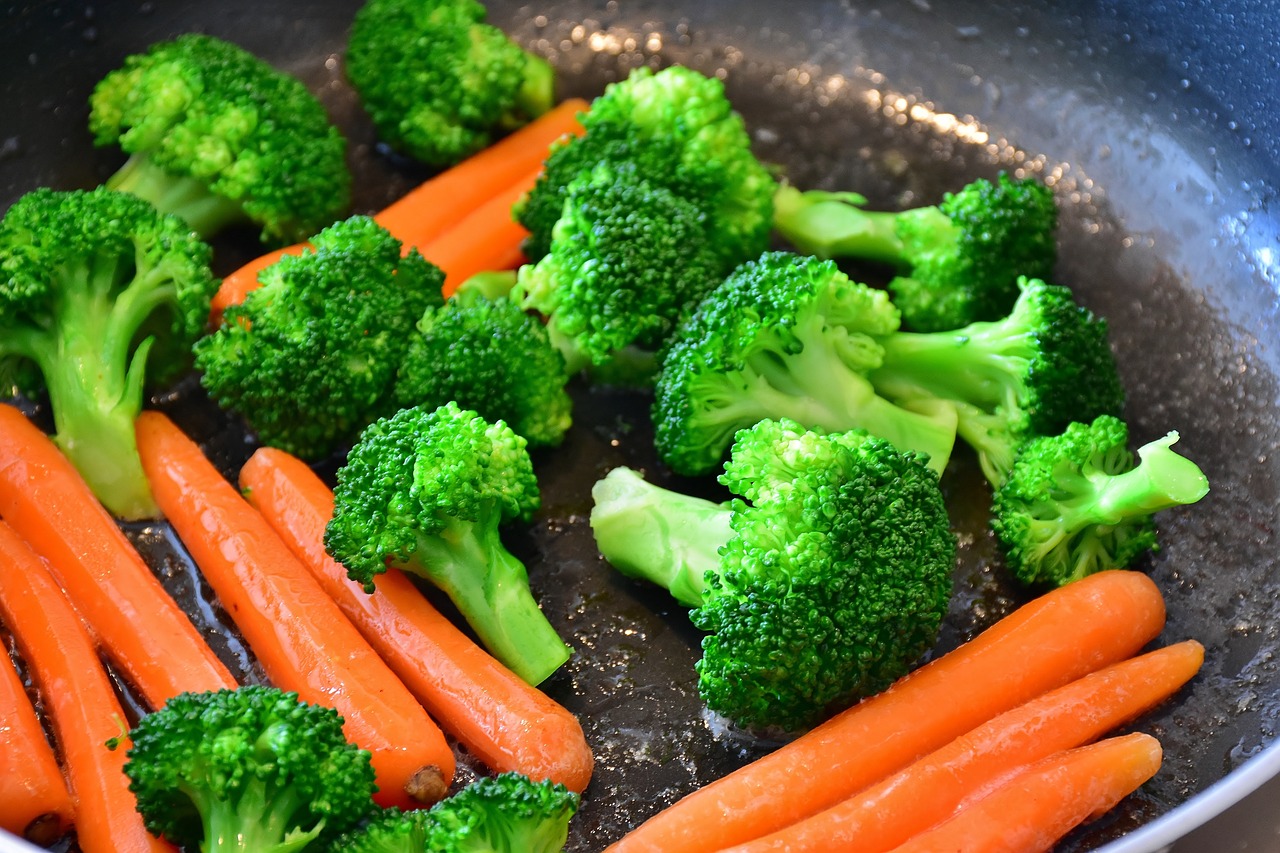Are you curious about adopting a vegan diet but don’t know where to start? Look no further! “The Ultimate Guide to Vegan Diets” is your go-to resource for all things vegan. From comprehensive information on specific diets to practical meal planning tips, you’ll find everything you need to know to embark on a healthy and sustainable plant-based lifestyle. Whether you’re a newbie or a seasoned vegan, this guide also offers valuable nutritional advice, including how to fulfill your dietary needs and optimize your health on a vegan diet. Get ready to embrace a compassionate and nutritious way of eating with our ultimate guide!

This image is property of pixabay.com.
Benefits of a Vegan Diet
Health Benefits
A vegan diet can offer a wide range of health benefits. By eliminating animal products and focusing on plant-based foods, you can significantly reduce your intake of saturated fats and cholesterol, leading to improved heart health. A vegan diet is also rich in fiber, which aids in digestion and can help prevent conditions like constipation and diverticulosis. Additionally, a plant-based diet is associated with a lower risk of obesity, type 2 diabetes, and certain cancers. It can also contribute to healthier skin, increased energy levels, and improved overall well-being.
Environmental Benefits
Choosing a vegan diet can have a positive impact on the environment. Animal agriculture is a significant contributor to greenhouse gas emissions, deforestation, and water pollution. By opting for plant-based alternatives, you can help conserve resources, reduce your carbon footprint, and promote sustainability. Vegan diets require fewer resources, including land, water, and energy, making them a more eco-friendly choice.
Ethical Benefits
One of the most powerful reasons to adopt a vegan diet is the ethical aspect. By choosing not to consume animal products, you are taking a stance against animal cruelty and exploitation. Factory farming often involves inhumane practices, including overcrowding, confinement, and the use of hormones and antibiotics. By going vegan, you are advocating for the well-being and ethical treatment of animals, aligning your diet with your values of compassion and respect.
Getting Started with a Vegan Diet
Understanding Veganism
Before diving into a vegan lifestyle, it’s crucial to understand what veganism entails. Veganism is more than just a diet; it is a way of life that seeks to exclude the use of animals for food, clothing, or any other purpose. It involves avoiding not only meat and fish but also animal-derived ingredients such as dairy, eggs, honey, and gelatin. By understanding the principles and foundations of veganism, you can better appreciate the impact of your choices and make informed decisions.
Transitioning to a Vegan Diet
Transitioning to a vegan diet can be a gradual process rather than an overnight change. It’s important to be patient with yourself and take it one step at a time. Begin by gradually reducing your consumption of animal products and incorporating more plant-based options into your meals. Experiment with vegan recipes and explore the variety of delicious meat and dairy alternatives available. Seek support from online vegan communities, friends, or family members who have already made the transition.
Stocking Your Kitchen
Creating a vegan-friendly kitchen is an essential step in successfully adopting a vegan diet. Start by stocking up on fresh fruits and vegetables, as well as whole grains, legumes, nuts, and seeds. These plant-based staples will form the foundation of your meals. Replace animal-based products with vegan alternatives like plant-based milk, tofu, tempeh, and seitan. Make sure to have a variety of herb and spice blends on hand to enhance the flavors of your dishes. Additionally, investing in a good blender or food processor can make preparing vegan meals easier and more enjoyable.
Reading Food Labels
Reading food labels becomes crucial when you follow a vegan diet. It’s important to familiarize yourself with common animal-derived ingredients and be vigilant in checking labels for their presence. Ingredients like whey, casein, gelatin, carmine, and albumin are derived from animals and should be avoided. Look for certifications like vegan logos or labels to ensure a product is free from animal products. As you become more knowledgeable about potential animal-derived ingredients, you’ll be able to make more informed choices while grocery shopping.
Essential Nutrients on a Vegan Diet
Protein Sources
Contrary to popular belief, it is entirely possible to meet your protein needs on a vegan diet. Plant-based protein sources include legumes (such as lentils, chickpeas, and black beans), tofu, tempeh, seitan, quinoa, hemp seeds, chia seeds, and edamame. It’s important to consume a variety of these high-protein foods throughout the day to ensure you’re getting a complete amino acid profile. You can also incorporate vegan protein powders or protein-rich snacks for an extra boost.
Iron Sources
Iron is an essential mineral that plays a vital role in carrying oxygen to your cells. While it is more easily absorbed from animal sources, there are plenty of plant-based iron sources available. These include dark leafy greens (such as spinach and kale), lentils, beans, tofu, tempeh, quinoa, fortified cereals, and dried fruits like raisins and apricots. Consuming iron-rich foods along with vitamin C-rich foods, like citrus fruits or bell peppers, can help enhance iron absorption.
Calcium Sources
Calcium is crucial for maintaining strong bones and teeth. While dairy products are traditionally associated with calcium, there are plenty of vegan-friendly sources available. Some excellent plant-based calcium sources include fortified plant milks (such as almond, soy, or oat milk), calcium-set tofu, kale, broccoli, collard greens, and fortified orange juice. It’s important to ensure you’re meeting your daily calcium needs, especially if you avoid dairy, by incorporating these foods into your diet.
Omega-3 Fatty Acids Sources
Omega-3 fatty acids are essential fats that play a critical role in brain function and heart health. They are typically found in fish and seafood, but there are vegan sources available as well. Plant-based sources of omega-3 fatty acids include chia seeds, flaxseeds, hemp seeds, walnuts, and leafy greens like spinach. Consider incorporating these sources into your meals regularly or opt for a vegan omega-3 supplement derived from algae.
Vitamin B12 Sources
Vitamin B12 is a nutrient that is primarily found in animal products and is essential for the proper functioning of the nervous system and the formation of red blood cells. It’s crucial for vegans to ensure they get an adequate intake of vitamin B12 through fortified foods or supplements. Fortified plant milks, breakfast cereals, nutritional yeast, and B12 supplements are popular options for meeting the recommended daily intake of this vitamin.
Meal Planning for a Vegan Diet
Understanding Macronutrients
To create a balanced vegan meal, it’s important to understand the role of macronutrients: protein, carbohydrates, and fats. Protein provides the building blocks for muscle repair and growth, carbohydrates provide energy, and fats help with nutrient absorption and hormone production. A well-balanced meal should include a source of each macronutrient to ensure you’re getting a variety of nutrients and staying satisfied.
Balancing Meals with Protein, Carbohydrates, and Fats
When planning your meals, aim to include a protein source, such as legumes, tofu, or quinoa, a complex carbohydrate source like whole grains or starchy vegetables, and a healthy fat source such as avocado, nuts, or olive oil. This combination will help keep you feeling satiated and provide the necessary nutrients for optimal health. Don’t forget to include plenty of colorful fruits and vegetables to add vitamins, minerals, and antioxidants to your meals.
Creating a Weekly Meal Plan
Meal planning is a key aspect of successful vegan eating. It helps you stay organized, saves time, and ensures you have nutritious meals ready throughout the week. Start by selecting a variety of plant-based recipes that appeal to your taste preferences. Make a shopping list based on these recipes and the ingredients you already have. Set aside some time each week for meal preparation, such as chopping vegetables, cooking grains, or making sauces, to make weeknight cooking more manageable.
Batch Cooking and Meal Prep
Batch cooking and meal prep can be incredibly helpful when following a vegan diet. Choose a day or two each week to prepare larger quantities of staple foods like brown rice, quinoa, roasted vegetables, or a big pot of soup. Portion out your meals into containers, making it easy to grab a ready-made meal when time is tight. Prepping snacks like granola bars or cutting up fruits and vegetables for quick and convenient snacks can also contribute to the success of your vegan journey.

This image is property of pixabay.com.
Vegan Recipes and Meal Ideas
Breakfast Ideas
Start your day with a delicious and nourishing vegan breakfast. Try a hearty bowl of overnight oats topped with fresh fruit and nuts, or whip up a batch of fluffy vegan pancakes served with maple syrup and berries. For a quick option, blend together a smoothie with plant-based milk, a handful of spinach, a ripe banana, and your favorite toppings like chia seeds or nut butter.
Lunch and Dinner Ideas
Vegan lunches and dinners can be incredibly satisfying and flavorful. Prepare a vibrant salad with mixed greens, roasted vegetables, quinoa, and a creamy tahini dressing. Make a comforting bowl of vegetable curry served over brown rice or indulge in a homemade veggie burger with sweet potato fries. Experiment with international cuisines and explore vegan versions of dishes like pad Thai, veggie sushi rolls, or black bean tacos.
Snack Ideas
Snacks can provide an energy boost between meals and keep hunger at bay. Choose nutrient-dense options like a handful of nuts, roasted chickpeas, or a piece of fresh fruit. Hummus with carrot sticks or whole-grain crackers is also a satisfying and healthy snack. If you have a sweet tooth, try dried fruit, energy balls made with dates and nuts, or a square of dark chocolate.
Dessert Ideas
Vegan desserts can be just as indulgent and delicious as their traditional counterparts. Bake a batch of gooey vegan chocolate chip cookies or whip up a creamy vegan cheesecake made with cashews and coconut milk. Enjoy a refreshing fruit sorbet or treat yourself to a rich vegan chocolate mousse. There are countless vegan dessert recipes available, ensuring there’s something to satisfy every sweet tooth.
Vegan Shopping Guide
Finding Vegan-Friendly Stores
Finding stores that cater to vegan shoppers is becoming increasingly easier. Health food stores, organic markets, and specialty vegan grocers often have a wide range of plant-based products available. Larger mainstream supermarkets are also expanding their vegan selections, with dedicated plant-based sections or clearly labeled vegan products. Consider exploring online grocery options as well, as they often provide a comprehensive range of vegan options.
Navigating the Produce Section
The produce section is a vegan’s paradise, offering an abundance of fresh fruits and vegetables. Opt for a colorful array of produce to ensure you’re getting a variety of vitamins and minerals. Don’t be afraid to try different fruits and vegetables and experiment with seasonal produce. Be sure to wash your produce thoroughly before consuming it to remove any residues or bacteria.
Identifying Vegan-Friendly Products
When grocery shopping, it’s essential to read product labels to determine if they are vegan-friendly. Look for labels that explicitly state “vegan,” “plant-based,” or “dairy-free.” Additionally, familiarize yourself with common animal-derived ingredients and avoid products that contain them. Supporting brands that have a clear commitment to vegan values can simplify your shopping experience, as they often provide dedicated vegan sections or clearly label their products.
Substitutions and Alternatives
Finding suitable vegan substitutions and alternatives can make transitioning to a plant-based lifestyle easier. Instead of dairy milk, try options like almond milk, soy milk, or oat milk. Plant-based meat alternatives, such as tofu, tempeh, seitan, or plant-based burgers, can be used to replace animal-based proteins. Nutritional yeast can provide a cheesy flavor in dishes, and coconut milk can substitute for heavy cream in many recipes. Explore the variety of plant-based options available and experiment with different brands and flavors to find your favorites.

This image is property of pixabay.com.
Eating Out as a Vegan
Researching Restaurants
When dining out, it’s helpful to research restaurants in advance that offer vegan-friendly options. Many restaurants now include vegan sections on their menus or clearly label vegan dishes. Look for restaurants that specialize in vegan cuisine or those that have received positive reviews for their plant-based offerings. Websites and apps dedicated to vegan dining can also provide valuable information, including reviews, menus, and recommendations.
Navigating Menus
Even if a restaurant doesn’t have a vegan section on their menu, there are often options that can be modified to suit a vegan diet. Don’t hesitate to ask the servers or chefs about vegan options or possible modifications to existing dishes. For example, a pasta dish can often be made vegan by omitting cheese or substituting a vegetable-based sauce. It’s important to be polite and communicate your dietary needs clearly to ensure a satisfactory dining experience.
Communicating with Waitstaff
Communication with the waitstaff is key when dining out as a vegan. Make sure to inform your server about your dietary requirements and ask for guidance in selecting suitable dishes. Discuss any allergies or intolerances you may have, and inquire about ingredients and potential cross-contamination. Building a rapport with the waitstaff can help ensure your needs are met and allow them to accommodate your requests more effectively.
Tips for Traveling
Traveling as a vegan may require some extra planning, but it’s entirely possible to find vegan options in different destinations. Research vegan-friendly restaurants, vegan-friendly grocery stores, or even local markets where you can find fresh produce. Pack vegan snacks and emergency food supplies in case you encounter limited options. Be open-minded, flexible, and respectful of local customs and cuisines, while still advocating for your dietary needs.
Vegan Supplements and Fortified Foods
Understanding Supplement Needs
While a well-planned vegan diet can provide most essential nutrients, there are a few nutrients of concern that may require supplementation. Vitamin B12 is the most critical nutrient for vegans to supplement, as it is primarily found in animal products. Other potential supplements to consider include vitamin D, especially if you have limited sun exposure, and omega-3 fatty acids derived from algae.
Recommended Supplements
Consulting with a healthcare professional or registered dietitian can help you determine the exact supplements you may need based on your specific circumstances. They can provide personalized recommendations on dosage and frequency. It’s important to choose supplements from reputable brands and ensure they are certified vegan to avoid any potential animal-derived ingredients.
Fortified Food Options
Fortified foods can be a convenient way to ensure you’re getting essential nutrients on a vegan diet. Many plant-based milks, breakfast cereals, and plant-based meats are fortified with vitamins and minerals like calcium, iron, and vitamin B12. Check labels for fortification information and choose products that align with your nutritional needs. Incorporating fortified foods can be especially beneficial if supplements are not your preferred option.

Managing Special Dietary Needs on a Vegan Diet
Vegan and Gluten-Free
Managing a vegan and gluten-free diet can be challenging but not impossible. Many naturally gluten-free foods like fruits, vegetables, whole grains, legumes, and nuts are also vegan. However, it’s essential to be mindful of cross-contamination and ensure that gluten-free products are not processed with non-vegan ingredients. Look for certified gluten-free products and be vigilant about reading labels to avoid hidden sources of gluten.
Vegan and Soy-Free
While soy products are a common source of plant-based protein in a vegan diet, there are still plenty of alternatives for those who need to avoid soy. Opt for protein-rich alternatives like lentils, chickpeas, quinoa, tempeh, seitan, or pea protein powder. Experiment with different non-soy milk options like almond, oat, coconut, or rice milk. In addition to store-bought options, consider making homemade versions of dairy alternatives to have more control over the ingredients used.
Vegan and Nut-Free
If you have a nut allergy, there are still plenty of plant-based options available for you. Focus on protein sources like legumes, seeds, and non-nut grains such as quinoa or amaranth. Use alternatives like sunflower seed butter or seed-based butters instead of nut-based spreads. Substitute oat milk, rice milk, or coconut milk for nut milk options. Be diligent about reading labels and avoiding foods that may have come into contact with nuts during processing.
Vegan and High-Protein
A vegan diet can provide an ample amount of protein if you choose protein-rich plant-based foods strategically. Incorporate a variety of legumes such as lentils, chickpeas, and black beans into your meals. Include tofu, tempeh, seitan, and plant-based meats as alternative protein sources. Consider adding high-protein grains like quinoa and amaranth to your meals. Additionally, protein-rich snacks like edamame, hemp seeds, or protein bars can be great options to boost your daily intake.
Staying Motivated and Overcoming Challenges
Finding Support and Community
Building a support network is crucial in staying motivated on a vegan journey. Connect with like-minded individuals through online vegan communities, social media groups, or local meetups. Share experiences, tips, and recipes with others who understand the challenges and benefits of a vegan lifestyle. Surrounding yourself with positive and supportive individuals can help you stay motivated and inspired throughout your journey.
Dealing with Social Situations
Navigating social situations as a vegan may present challenges, especially when attending events or dining with non-vegan friends and family. Communicate your dietary preferences in advance and offer to bring a vegan dish to share. Be prepared to answer questions and address misconceptions about veganism calmly and respectfully. Approach these situations with an open mind and use them as an opportunity to educate and inspire others about the benefits of a vegan diet.
Overcoming Cravings
Cravings for non-vegan foods may arise, especially during the initial transition. Recognize that cravings are a normal part of change and can be managed. Experiment with vegan alternatives for your favorite comfort foods, like veggie burgers, vegan mac and cheese, or dairy-free ice cream. Satisfy cravings for salty snacks with roasted chickpeas or popcorn seasoned with nutritional yeast. If you’re craving sweets, indulge in naturally sweet treats like fresh fruit or vegan chocolate. Over time, as your taste buds adapt, the cravings for non-vegan foods often diminish.
Tips for Long-Term Success
To maintain long-term success on a vegan diet, it’s essential to focus on variety, balance, and sustainability. Continuously explore new recipes, ingredients, and meal ideas to keep your meals interesting and enjoyable. Prioritize nutrient-dense whole foods while allowing yourself occasional treats or indulgences. Consider meal prepping and batch cooking to save time and make healthy choices more convenient. Stay informed about the latest research and developments in veganism to stay motivated and confident in your dietary choice. And most importantly, be patient with yourself and embrace the journey, celebrating every milestone along the way.






